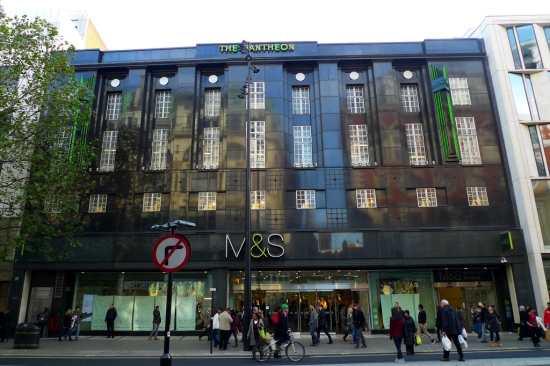Last year saw an upturn in consumer confidence as the effects of the economic recovery began to take hold. As a result, many high street chains hoped for a more profitable Christmas trading period than has been seen in the UK for several years, with brands such as John Lewis and Next in particular reaping the rewards.

However, certain high street staples were not so fortunate in the key December trading month, with Marks & Spencer expected to post its third disappointing Christmas results in a row later this week.
The 130 year old retailer had hoped that the re-launch of its Autumn/Winter clothing collection, timed to coincide with the Christmas rush, would help turn around an unimpressive streak of general merchandise sales yet early forecasts by analysts remain gloomy.
In fact, certain industry experts are predicting a fall of as much as 1.5 per cent in like for like general merchandise sales, with the majority believing that drops of at least 0.5 per cent are certain. Although like for like sales in the food category are expected to rise by around 2.0 per cent, this will certainly dampen the post-Christmas spirits of chief executive Marc Bolland if predictions turn out to be correct.
Unfortunately, it appears that Marks & Spencer’s attempts to draw customers in in the lead up to Christmas may have played a major part in the pessimism of City analysts. There are major concerns that, by launching “Mega Day” promotions which gave consumers up to 30 per cent off clothing items in store and 20 per cent off on the brand’s website, the retailer may have severely damaged profit margins for the quarter.
Cantor Fitzgerald analyst Freddie George says; “Our concern is that gross margins have been under pressure from higher levels of discounting in general merchandising.”
Marks and Spencer is not the only high street retailer which struggled to encourage consumer spending over the festive period; Debenhams, in contrast to its successful competitor John Lewis, was forced to post a profits warning on New Year’s Eve after festive promotional campaigns fell flat. Chief executive Michael Sharp blamed the wave of promotions in December, saying the high street became a “sea of red” thanks to the number of retailers cutting prices in order to make room on the shelves for spring clothing lines.
Despite the fact that Marks & Spencer’s food business is currently outstripping the efforts of supermarket brands such as Tesco and Sainsbury’s, the failure of the clothing line in igniting enthusiasm will surely come as a blow to Mr Bolland. While he continues to claim that the rejuvenation of the once successful clothing line is a “journey” and a long term challenge, he must be questioning what exactly must be done in order to turn things around at last.
Previous Post
Limerick sets Ireland’s Cheapest Commercial Rate